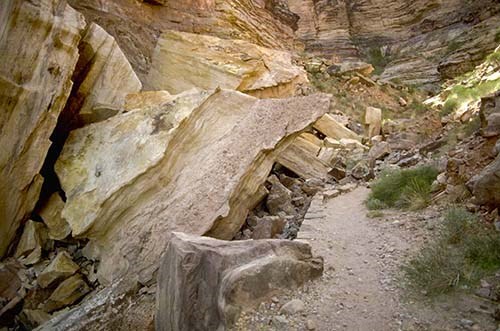
Except for the occasional visitor who hears a rock fall, or a rare large landslide, it is not apparent that the canyon is actively getting bigger. However, the erosional processes that originally formed the Grand Canyon are still active today as the Colorado River and its tributaries slowly cut deeper into the canyon.
In the recent geologic past, volcanic activity dramatically impacted the Grand Canyon. In the western Grand Canyon hundreds of volcanic eruptions occurred over the past two million years. At least a dozen times, lava cascaded down the walls of the Inner Gorge, forming massive lava dams that blocked the flow of the Colorado River. Three of these lava dams were over 1,000 feet high, forming lakes similar to reservoirs such as Lake Powell or Lake Mead. Some of the lakes were over 100 miles long and filled the lower portion of the Grand Canyon for many years before finally over-topping the dam and eroding much of it away. Cinder cones and the remnants of lava flows and dams are visible in the Toroweap area and from the river near Lava Falls. Just southeast of Grand Canyon, near Flagstaff, is Sunset Crater Volcano National Monument, where in A.D. 1064 a series of eruptions built the park’s namesake cinder cone. About 45 earthquakes occurred in or near the Grand Canyon during the 1900’s. Of these, five registered between 5.0 and 6.0 on the Richter Scale. Dozens of faults cross the canyon, with at least several active in the last 100 years. |
Last updated: December 18, 2020
